“There’s three of us playing guitar in Foo Fighters… A lot of tone details can get lost, which is what drew me to the Cleaver – that P-90 cut”: Chris Shiflett on how he found his weapon of choice with his Fender Cleaver Telecaster Deluxe
Here is Shiflett on his P-90 epiphany, why everyone should have 500K pots on their guitar, and everything you need to know about his new signature Tele
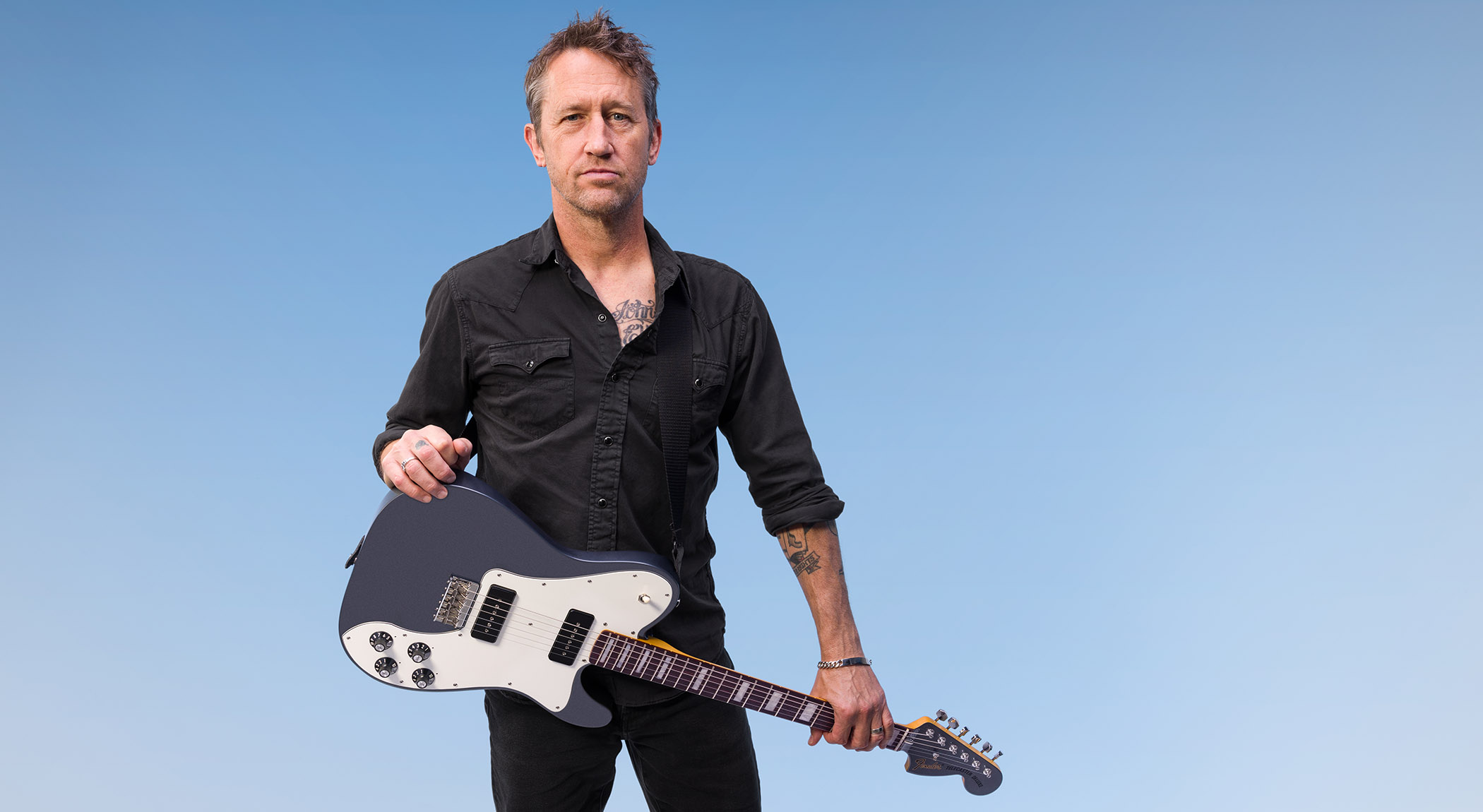
Since joining Foo Fighters in 1999, Chris Shiflett has quietly carved-out his niche as a modern-day guitar hero.
As the lead gunslinger in the Foos’ triple-pronged guitar assault, he bolsters the band’s live sets, jumping seamlessly between the band’s drop-D riffs, melodic lines and even gets to display some of his early influences during the ‘band intro’ of the show.
In his spare time – at times a seemingly alien concept in the Foos camp – Chris can be found hauling his gear into more intimate venues with his country/Americana solo project, Chris Shiflett and The Dead Peasants.
It’s this, combined with his Walking The Floor and Shred With Shifty Podcasts, that have seen Shiflett pivot from being ‘Foo Fighters guitarist’ to ‘modern guitar hero’.
As a fan of the instrument, it’s no surprise that he’s just dropped his third collaboration with Fender, which began with the Mexican-made Chris Shiflett Telecaster Deluxe, before shifting to the opposite end of the bank balance for his Masterbuilt, P-90-loaded Telecaster Deluxe nicknamed The Cleaver.
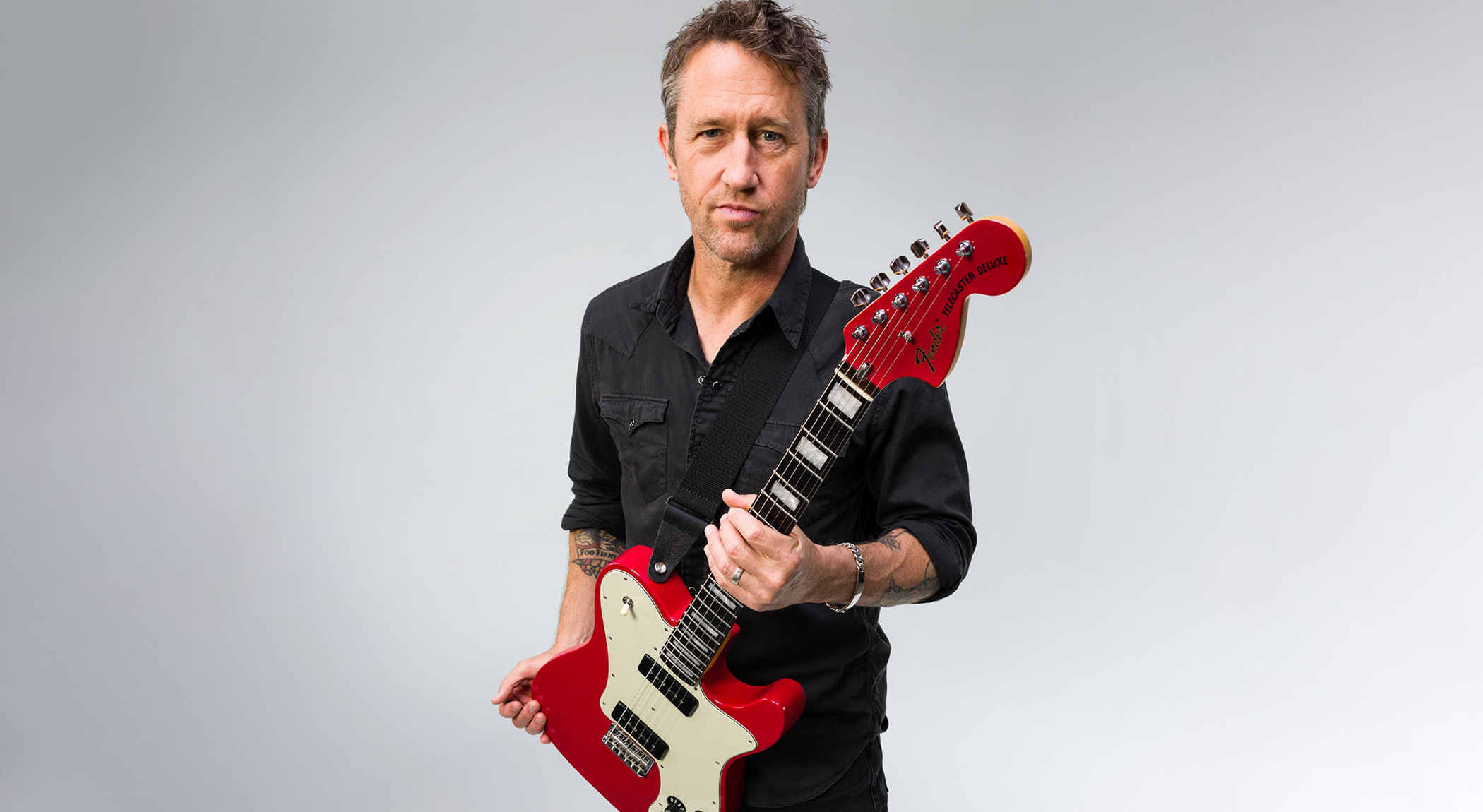
Now, Chris and Fender have unveiled the Chris Shiflett Signature Cleaver Telecaster Deluxe – an American-made, production version of his Custom Shop original.
We fired up our Zoom connection and spoke to the man himself all about his latest model.
Want all the hottest music and gear news, reviews, deals, features and more, direct to your inbox? Sign up here.
Let’s start with the name: The Cleaver. Is it true that your front-of-house engineer came up with it?
“I think that’s how it happened. I don’t exactly remember, but it was in reference to the tone, because the P-90 just slices right through. But I like it because now it’s like a horror movie reference or something. You know? ‘Get this guitar and you can murder your whole family!’”
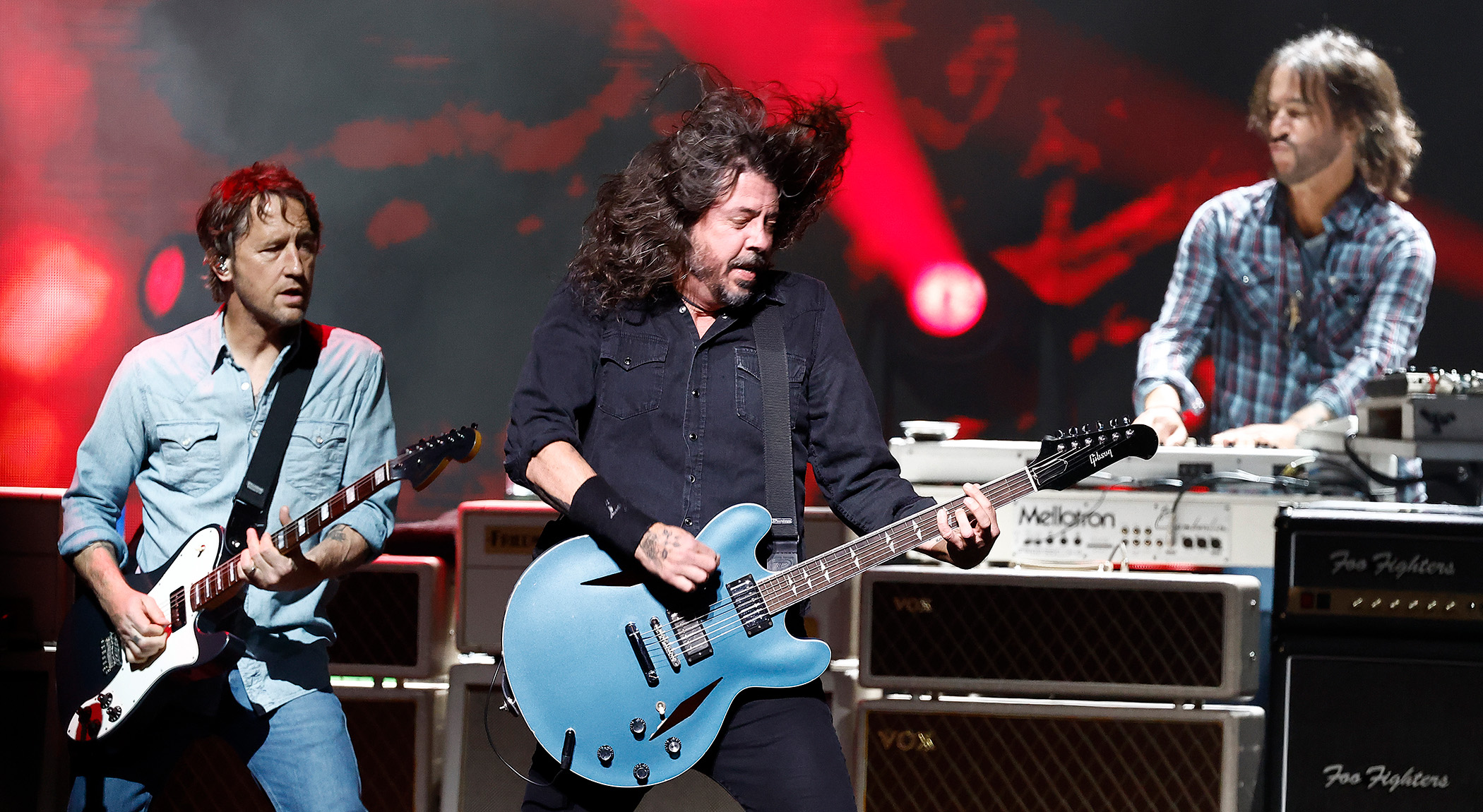
It's got a certain cockney kind of vibe to it too, is there some Arsenal inspiration there?
“There’s a funny story that goes along with that, because [Arsenal] is why I made the original one red! I wanted to put the cannon logo…you know where you screw the neck on?
“I wanted to put the Arsenal cannon logo in there so that nobody would ever know it was there unless you took the neck off. Maybe somebody would take the neck off and find it. But that idea got shot down. Legal said, ‘Absolutely not, buddy, not gonna happen.’”
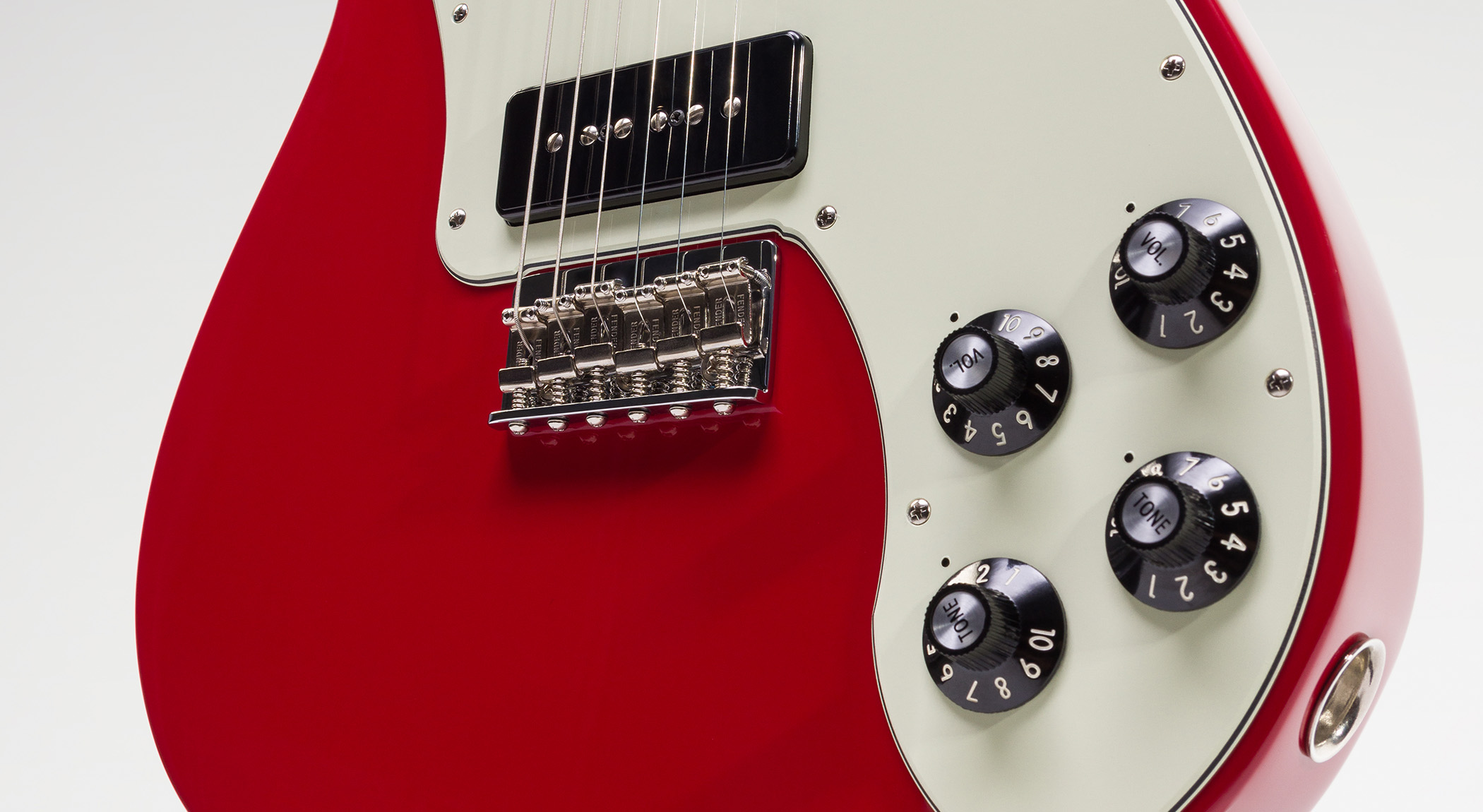
So the production version of The Cleaver is a midpoint between your original signature model and the Masterbuilt version. How did it compare this time, not having to be so conscious of price points?
“It was great, you know, because for the Masterbuilt version we pulled out all the stops. The guiding light was: let’s not worry about what this costs at all. Let’s just make it the best guitar can it be, and then wherever that falls, so be it. But for this one, I wanted it to be American-made.
“It was great, because that does afford you a little bit of luxury of, like, being able to put in the 500k pots and just getting it just right. The pickups are just right, the tint is just right. We played around with a few different things and got it just where we wanted to be, the bevel on the pickguard is just, right. All those little details.”

Do you find that those tiny details that you didn’t think about before suddenly become the most important decision in the world?
“Yeah! But some of those details, like the 500k pots actually have a gigantic impact on how your guitar operates, and the tone and the feel. For me, and the type of player I am, I do a lot of rolling the volume up and down, rolling the tone up and down. Moving, to the neck pickup, to the bridge, all that stuff, I do that a lot.
“It’s just always been a big part of of how I play. Because when I was a kid, I had no effects pedals. I had nothing. I had my guitar, and if I wanted to clean up, I had to roll the volume off, and I still do that today. The little details like that are super meaningful in the long run.”
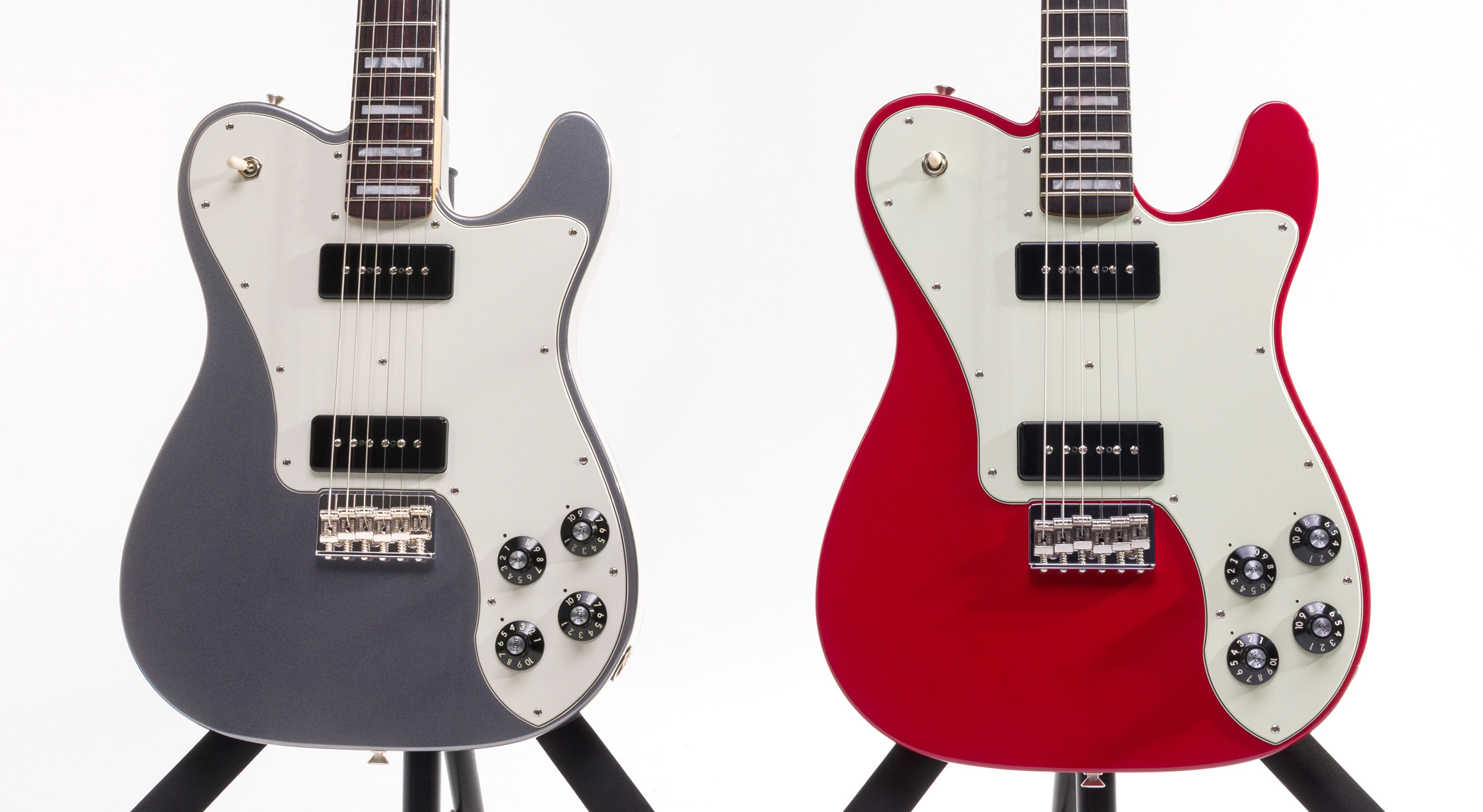
You’ve stuck with the Tele Deluxe for each of your signature guitars. What is it about the Deluxe format that you like?
“Well, that was sort of my entry point to the Tele, really. I have an old, I think it’s a ’72 Tele Deluxe, and it's got those Wide Range pickups in it. That was the first Tele I ever bought. So my entry point was not through the traditional single coil route. I came to that a bit later.
“It was sort of a natural move to go from the Wide Range pickups to [traditional] humbuckers, because I am such a humbucker-centric guitar player in most of what I’ve done over the years, and those are pretty closely related. But as you do with guitar playing you’re always on these quests for a different tone, and you’re always evolving what you want.”
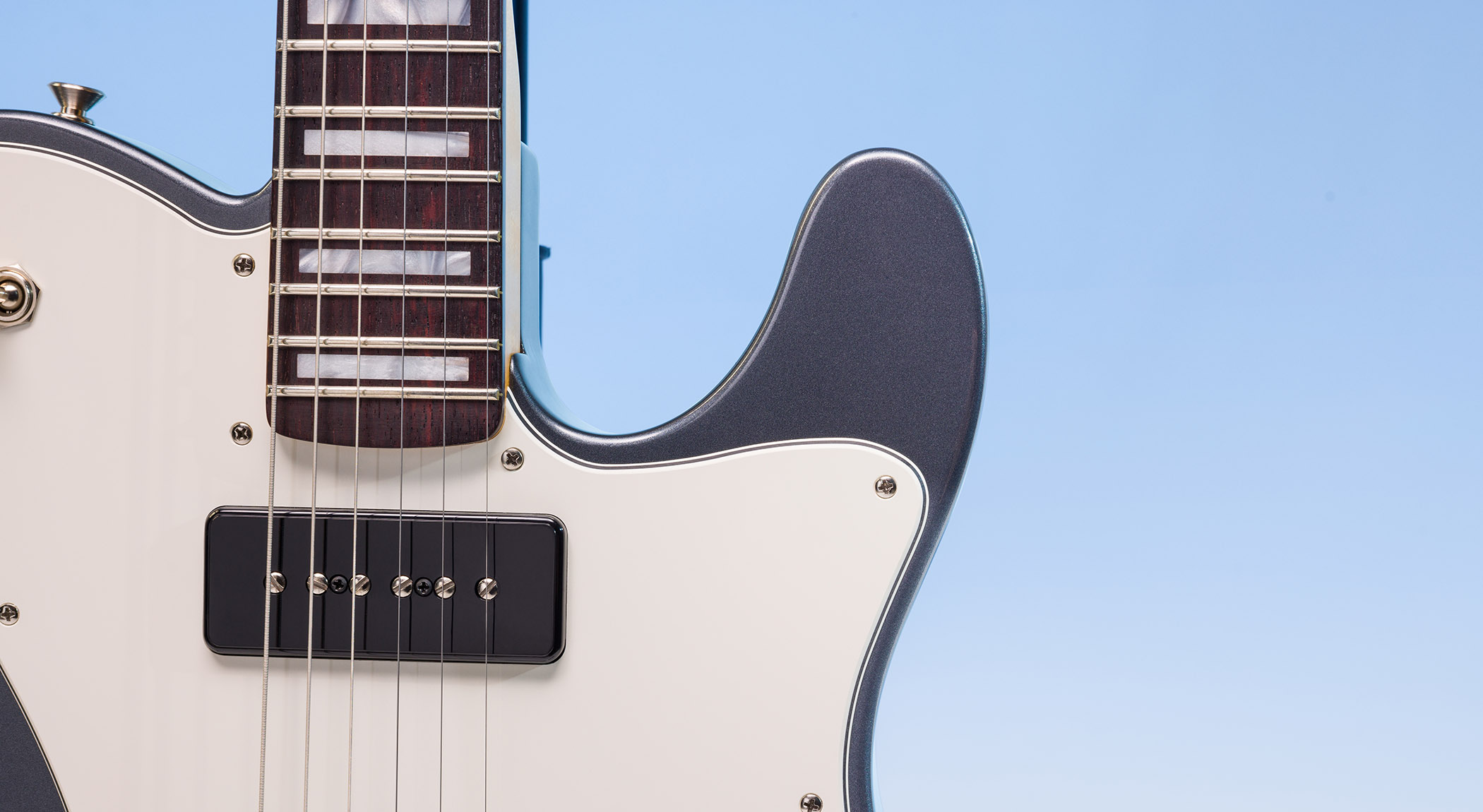
“When I was young, I was far more comfortable with really saturated, high-gain sounds. Then as the years went by, I just moved more and more away from that. It’s always the shifting sands of what you need in the moment, which is one of the great things about landing on the P-90. It just works in all the different styles that I tend to lean into.”
Is the Deluxe control layout part of the appeal?
“Yeah, for sure. My first good guitar, that I got for my 15th birthday, and the only guitar I had for a very long time, was a Les Paul. So when you think of those super-formative years of playing shows and what your hand does, just automatically, having that set up is very comfortable and intuitive to me – as is the rosewood fretboard, there’s just a certain warmth to it that I like.”
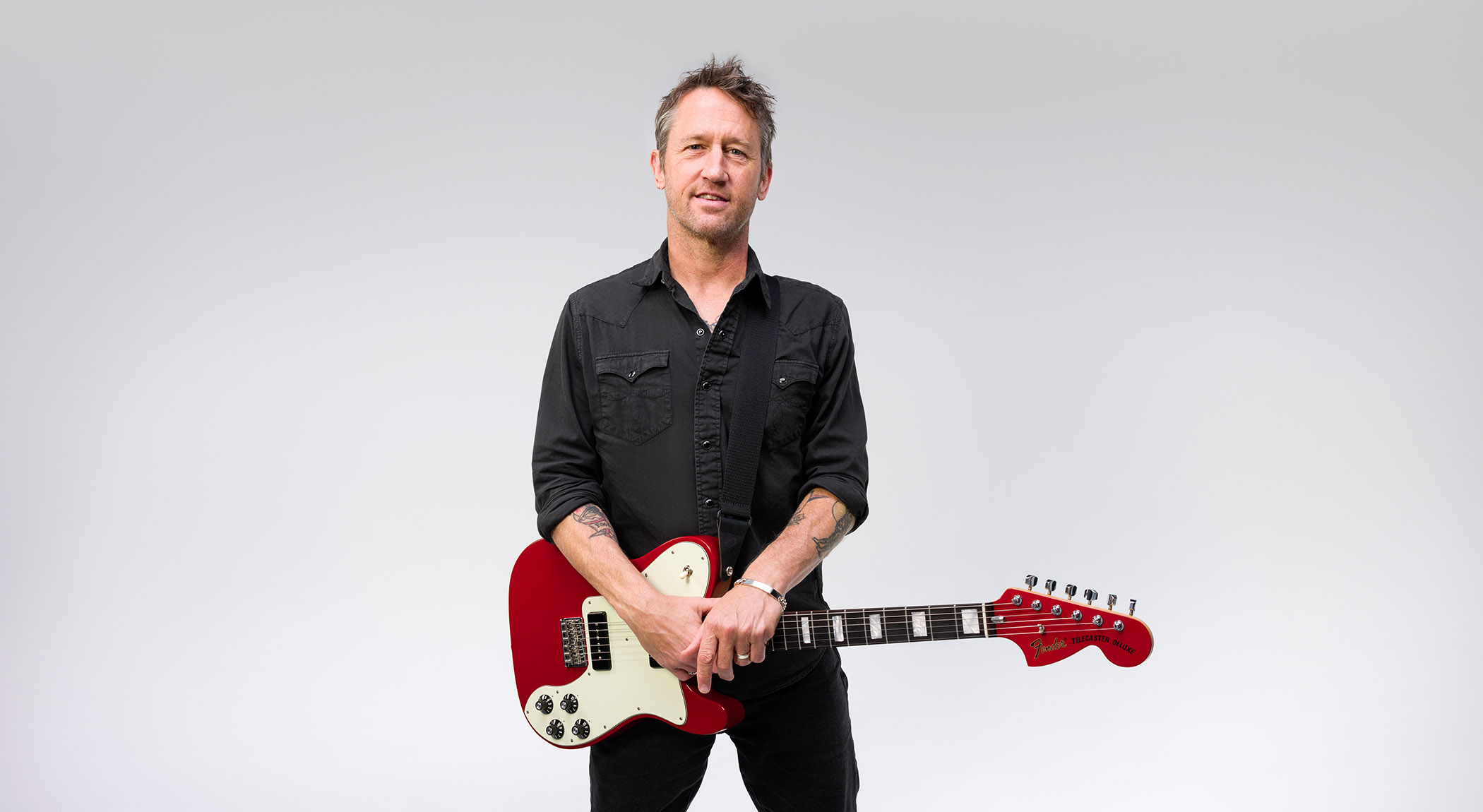
You’ve gone with block inlays this time around too…
“Oh yeah! And that’s where you just get into fun style points, you know, the painted headstock, the block inlays. That’s just for fun. And all the different colours – we made prototypes of, I think, four different colours. It was hard to decide, man. I loved them all. I wanted them all!
“The ones that we settled on are great. They contrast each other really well. The painted headstock strikes me as like an old ’60s kind of detail too. People either really like it or they really don’t. I dig it. I think it’s cool.
“Around the last Foo Fighters record, I had played a Jazzmaster on a bunch of those songs, and so got a couple of them and that was absolutely an influence, because they have the painted headstock and I just love the way that looked. So I was like, let’s do this!”
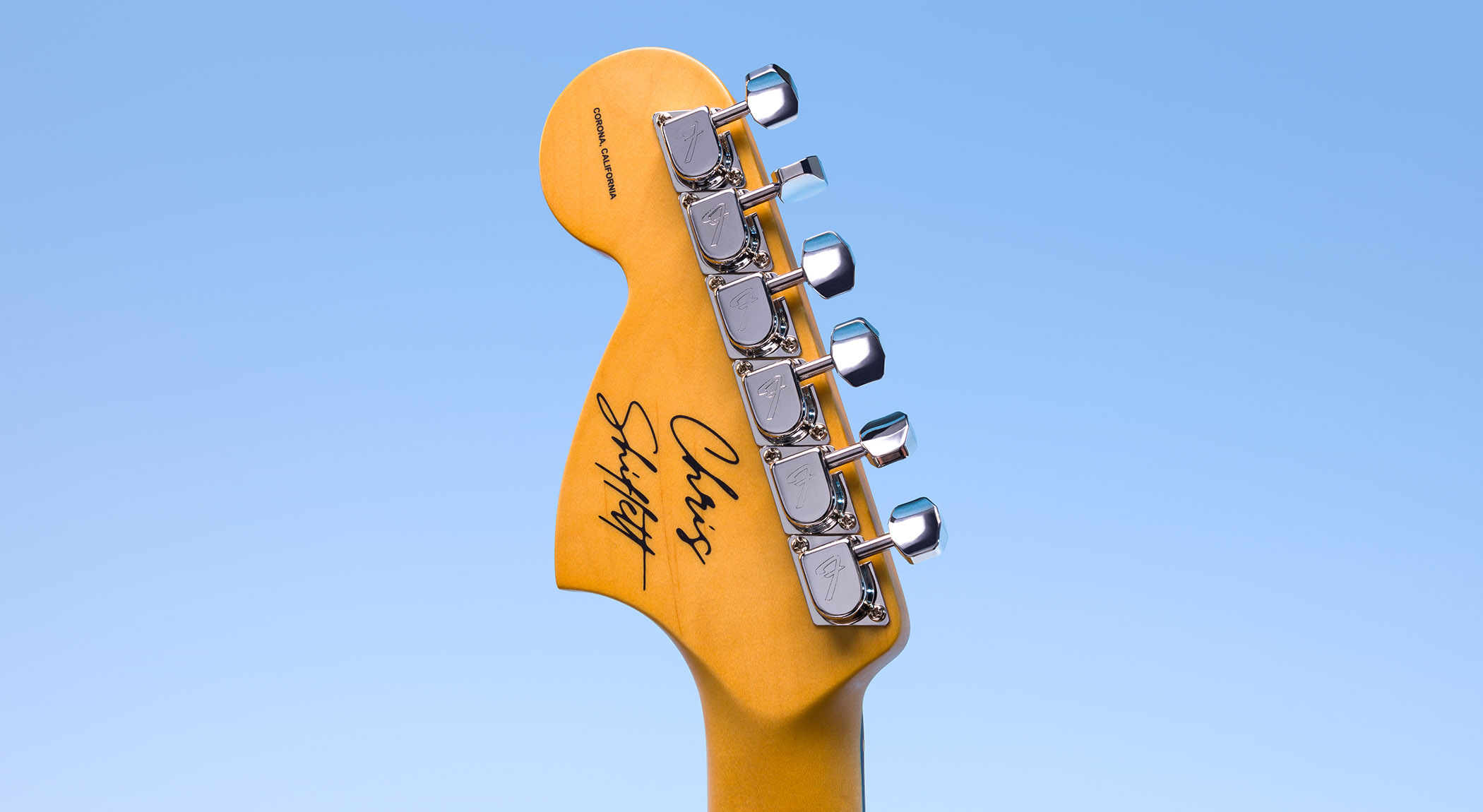
It comes in Dakota Red and Charcoal Frost Metallic. Do you have a preference on the two finishes?
“I definitely wanted to do Dakota Red because it was what we did the Masterbuilt in. But in that sense of, always being drawn to the newest thing, the Charcoal Frost is just new and shiny to me! So I’ve been kind of leaning into that one.
“We also did a really cool Sherwood Green prototype, like the other Masterbuilt finish, and that looked really good. Then we also did a Lake Placid Blue. So who knows, maybe we'll put one of those out down the road as some kind of something.”
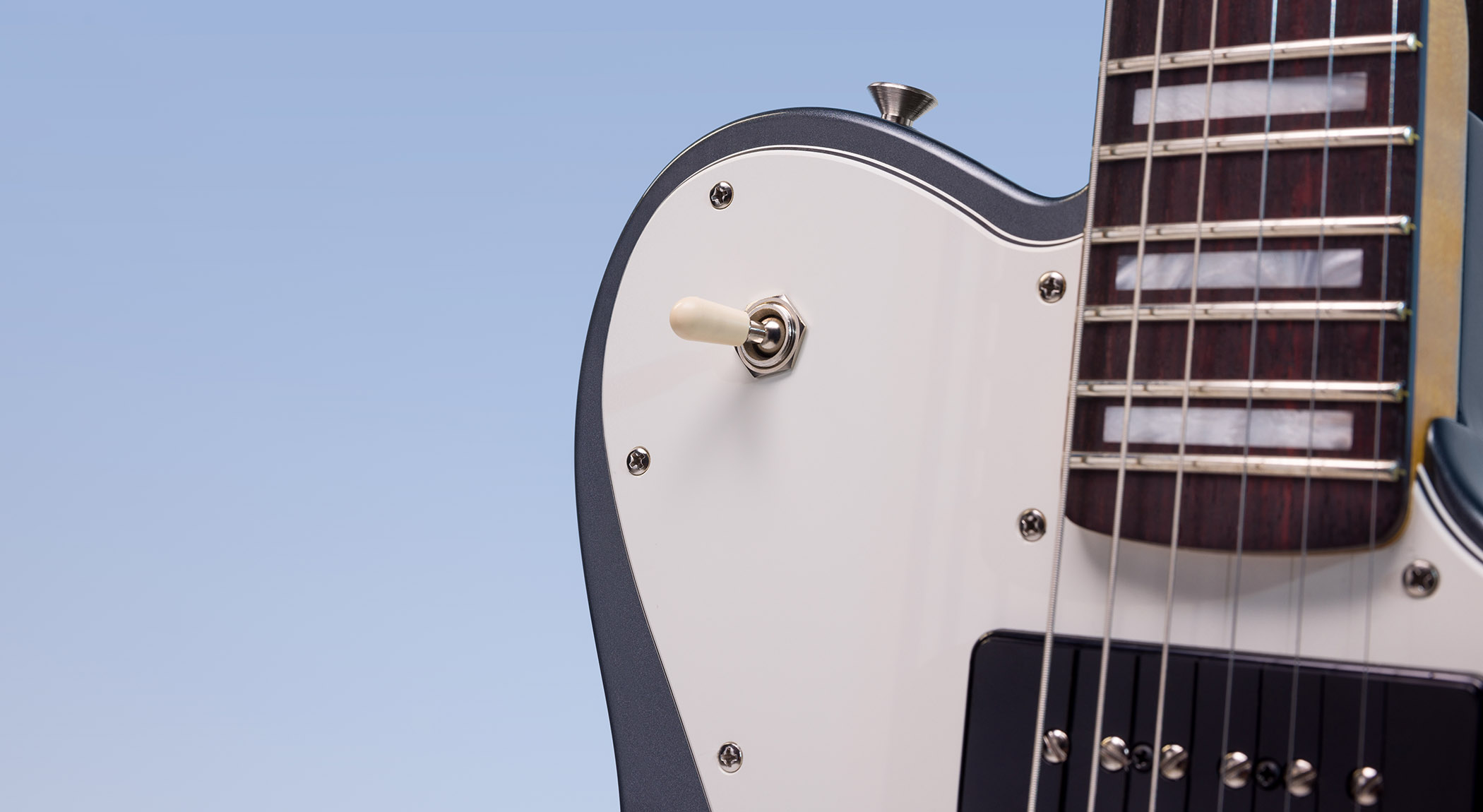
What drew you to P-90s after being such a prolific humbucker player?
“It’s just such a different tone. We’ve got a lot of guitar noise coming off the stage every night. There’s a lot of big amps up there, humbuckering! So to have something that sits in a little different place is good. I started playing a few different guitars with P-90s in them, and I just fell in love with it.”
Fender based the CS-90s off those Fralin noiseless ones... I A/B’d the prototype to my Masterbuilt, and they literally sounded exactly the same through my rig
You have noiseless Lindy Fralins in the Masterbuilt version, what was the process of developing the CS-90 pickups for the production models?
“Well, I know that Fender based it off those Fralin noiseless ones. But in the first prototype that they sent me, I A/B’d the prototype to my Masterbuilt, and they literally sounded exactly the same through my rig. It was like, ‘Yeah, you guys nailed the pickups!’ And that’s kind of the most important part of the whole thing.
“The other important details are the 500k pots. For me, it’s the taper. I can’t stand it when you turn a volume knob and it’s totally off…totally off… totally off…FULL VOLUME! I want that long, slow, even arc and same with the tone.
“Like with a wah-wah pedal – sometimes they only seem to have two extremes, even though you have this whole thing. But there’s really only two sounds. I want the full scope of the taper, and that’s what you get with those 500k pots.”
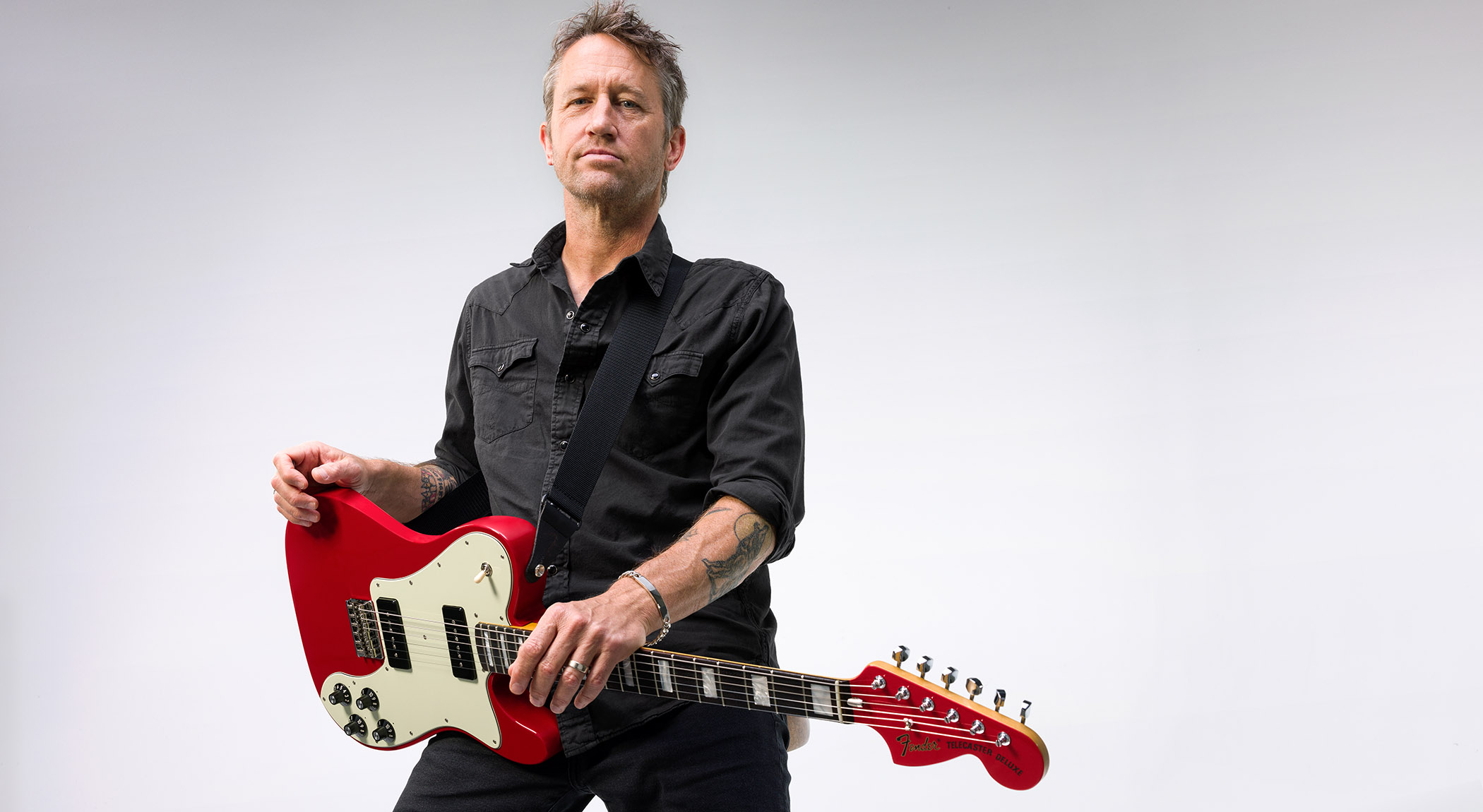
P-90s are sometimes overlooked by a lot of players – we choose single coils or humbuckers, but in a lot of ways they’re the perfect middle ground.
I mean, who doesn’t love a humbucker? But they’re a little more creamy and nice... There’s just an aggression to a P-90
“Yeah, that’s exactly what they are. They’re perfect, right in-between. When you’re playing a bridge P-90 through a high-gain amp, to me, there’s a certain growl to it that’s just different to humbuckers.
“I mean, who doesn’t love a humbucker? But they’re a little more creamy and nice in a way. There’s just an aggression to a P-90, like the aggressive side without the sort of shrill thing that can happen with a single coil.”
So, has The Cleaver become your main guitar these days?
“I always have them in my touring rig. I tend to switch up a lot of guitars. I bought a vintage Mockingbird. There’s always something weird coming in and out of the quiver on the road. But yeah, the Cleaver has been a mainstay.”
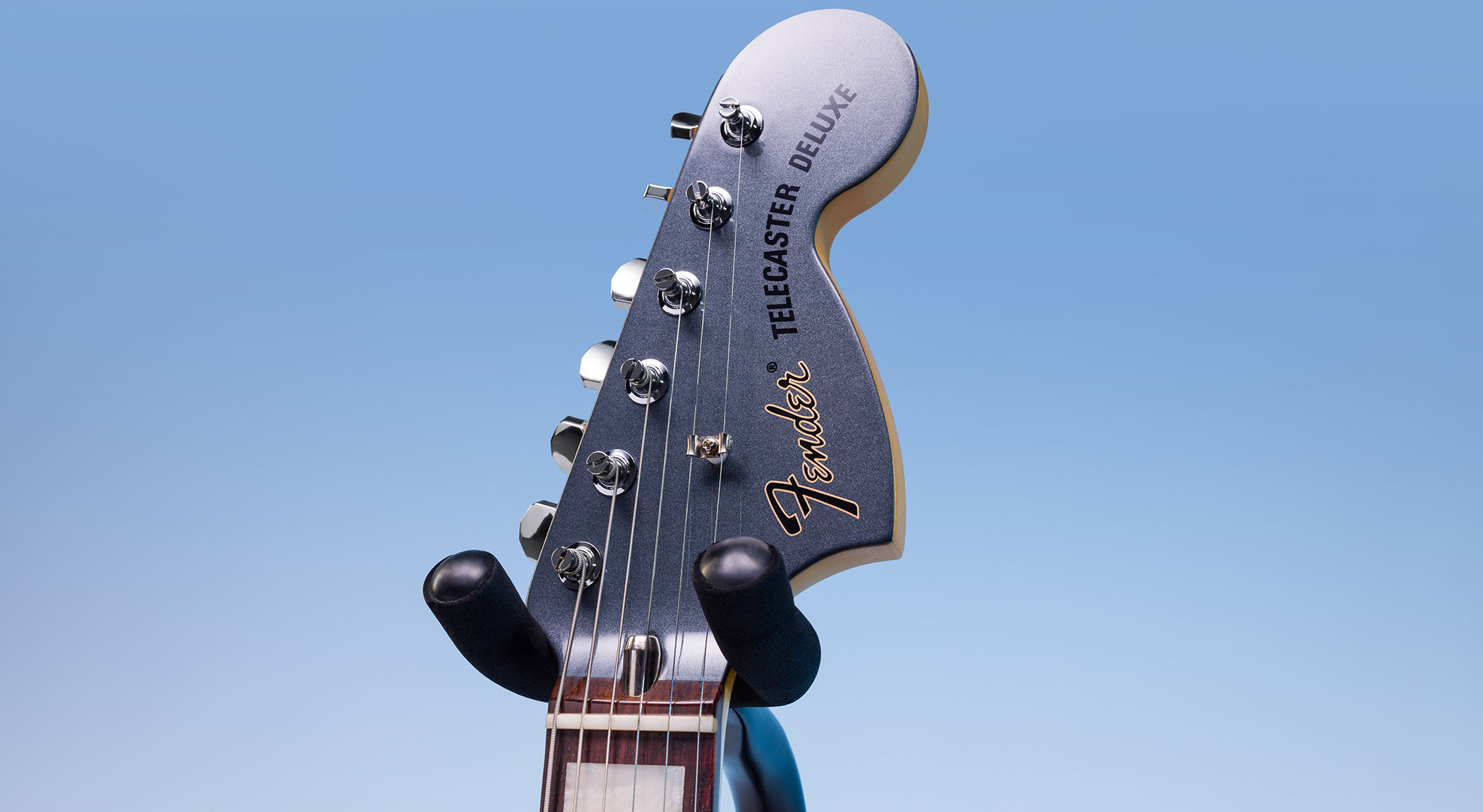
What makes a song a good fit for the Cleaver?
“Well, different songs sort of need different things, and I know I keep saying it, but it really does work for everything. But I love to play it on songs like Aurora that are less gain-y. Sometimes I'll have it on the on the middle position for some of that, because that just gives it a kind of a nice glassy feel.
“The song The Glass is another one. Best Of You, which is mostly super high gain, but has those sort of more picky, detailed parts. I drop it in all over. It works for me, for everything, but definitely on the songs that need a little more of that clear breakthrough. I tend to always use it on those.”
Aurora is so dense with layers of delay, it makes sense that it works on that song…
“Yeah, for most of that song, I’m going it’s the Cleaver through my Vox [AC30], and I have the Vox set just on the edge of breakup. You know, that Vox-y, just a little dirty, but chimey at the same time.
“Then with all those delays, there’ll be some chorus, and there might be some compression, and then I’ll kick into the Friedman for the for the big parts.”

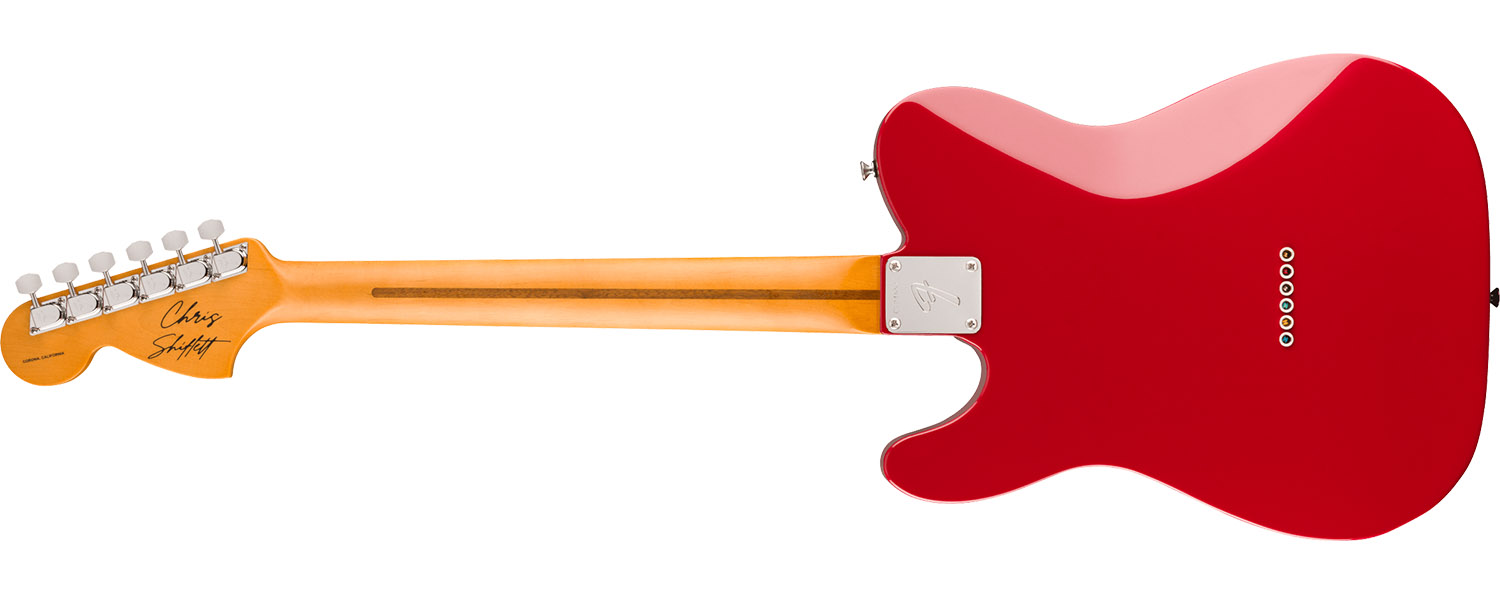
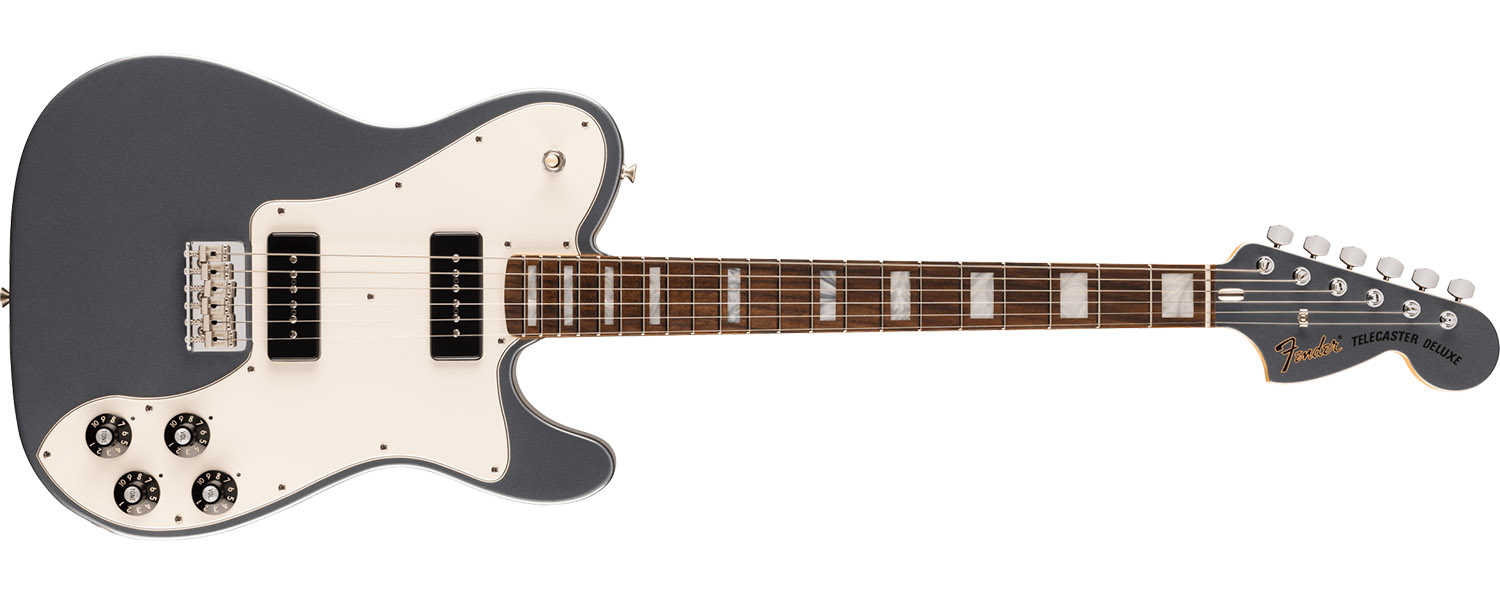

You mentioned earlier that you’re a fan of using the guitar’s controls. Does that apply to the Cleaver too, or do you have more default settings when you’re playing it?
In my solo stuff, I have to be honest, I’ve been playing a Strat more than I ever did before, and I’ve been really loving throwing that into the neck position and and doing some noodly stuff
“I am absolutely by far, mostly on the bridge pickup of probably any guitar I’m playing. It’s home base to me, for just about everything. But it depends.
“In my solo stuff, I have to be honest, I’ve been playing a Strat more than I ever did before, and I’ve been really loving throwing that into the neck position and and doing some noodly stuff with that. But, yeah, probably more on the other pickups in my solo thing, because it just lends itself to that and it's generally a one-guitar sound.
“When you have just one guitar, I always feel like you can get away with a lot more. When there’s three of us playing guitar in Foo Fighters, there’s all this other sound as well. I think a lot of those tone details can get kind of lost in it. Which is what drew me to The Cleaver in the first place – having that P-90 cut to kind of find your own little pocket.”
- The Chris Shiflett Cleaver Telecaster Deluxe is available now, priced £2,599/$2,499. See Fender for more details.

Stuart has been working for guitar publications since 2008, beginning his career as Reviews Editor for Total Guitar before becoming Editor for six years. During this time, he and the team brought the magazine into the modern age with digital editions, a Youtube channel and the Apple chart-bothering Total Guitar Podcast. Stuart has also served as a freelance writer for Guitar World, Guitarist and MusicRadar reviewing hundreds of products spanning everything from acoustic guitars to valve amps, modelers and plugins. When not spouting his opinions on the best new gear, Stuart has been reminded on many occasions that the 'never meet your heroes' rule is entirely wrong, clocking-up interviews with the likes of Eddie Van Halen, Foo Fighters, Green Day and many, many more.
